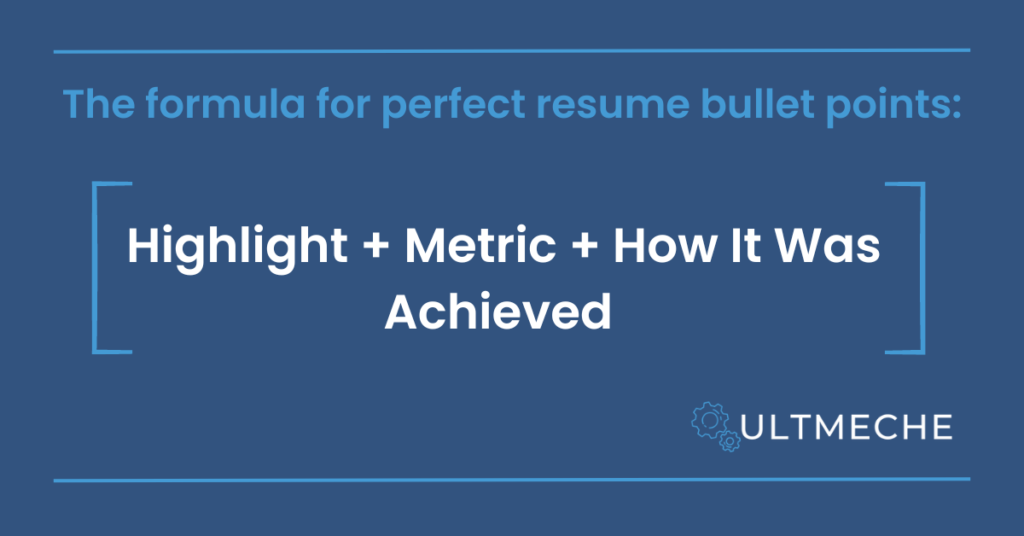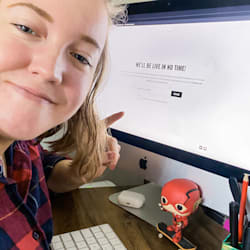When applying for jobs, particularly those in a competitive marketplace, it can be difficult to know how to make a resume stand out.
Not only do you need to prove that you have all of the necessary skills that a potential employer is looking for but you need evidence that you’re a better hire than all of the other candidates and will have a greater impact on the company.
Fitting all of this information into a simple document in a personalized manner can be incredibly difficult, which is where the perfect resume template can be invaluable.

How To Make A Resume: The Template That Will Land You Interviews
Get the ready built template that will 10x the chance of you landing your dream job.
#1 Gather Your information
The very first step when writing a resume is to gather any essential information. This includes getting copies of any certificates or qualifications you will need to provide to recruiters.
Preparing this information early will streamline your process and help you to focus on creating a perfect resume.
Select your best skills
The reality is that you can’t include every single skill in your resume, you need to be selective with what you highlight to ensure your resume is right for the hiring manager. Make sure everything you use is completely relevant and shows you in the best possible light.
Adapt your resume for each company
Resumes should always be personalized.
Every company will have slightly different requirements, even for roles that are very similar. They may be looking for different skills with equipment, different experiences to fill gaps in the team and even different specialisms or qualifications.
You should be looking at how to make a resume template that can be quickly and easily adapted to suit each role you apply for.
Choose the right keywords
You’ll find that in each job description there are very specific keywords and terms used by potential employers.
Identify the terminology that they use in the description and mirror it back to them in your resume. This is an important part of your early research when applying for roles.
Find quantitative evidence
It’s not enough to say that you have experience. You should be emphasizing the impact you have had and offering clear examples.
Numbers, stats and other quantitative evidence should be gathered at the start so you have a record of achievements to work from.
#2 Choose A Format
The resume format you choose is incredibly important. Not only does it ensure that the company’s ATS will be able to scan your information but it can help to highlight key achievements.
Pick a format that suits the hiring company
Companies may have requirements for their preferred format. Google, for example, prefers a very specific XYZ resume format in which achievements are highlighted with the below formula.
“Accomplished [X] as measured by [Y], by doing [Z].”
Use readable formatting
Creative resumes made on tools like Canva might look pretty but they are essentially useless for most job applications. If you’re looking to work in fields like tech or engineering, these intricately designed resumes can actually stop you from landing an interview.

Companies use applicant tracking systems to scan and analyze sometimes hundreds of resumes every day. These systems will not correctly scan and read complex resumes.
Include bullet points
Should you use bullet points in your resume? In short, yes.
Bullet points will encourage you to be concise in your information and they’re also much easier to skim for recruiters and hiring managers.
#4 Contact Information
You should always include contact information with your resume and cover letter.
Make sure there are always multiple points of contact, like your email and phone number.
Here’s a checklist of information that should be included:
- Full name
- A professional email address
- Location (your general area)
- Phone number
- LinkedIn Profile (if relevant)
- Portfolio (if applicable)
Only include details that paint a professional image to potential employers. Only include social media like LinkedIn if it adds to your application.
#5 Resume Summary
A resume summary is a very short bio or snapshot of who you are as a professional.
This section is reserved for highlights and impressive statements that will make a good first impression.
In these statements, it’s important to include successes and highlight the positive impact these have had on the wider company or team. Use figures and data to back up your successes.
Example: Engineering Manager:
Engineering Manager with 15 years of experience leading teams of 10+ overseeing $200M+ engineering projects annually. Led company standardization efforts, reducing internal engineering lead times by 500%.
#6 Writing The Education Section

The education section is perhaps the most simple part when you’re exploring how to make a resume.
You need to outline relevant qualifications for the role you’re applying for beginning with your highest education level.
Be sure to include the degree level and name, institution and completion date. You may also want to include your GPA (if it’s over 3.0.)
If you are a student or are yet to complete your degree you can add an expected completion date instead.
#7 Writing The Experience Section
The format for your experience section is perhaps the most important on your whole resume. This is the section that potential employers are most interested in, particularly if you have existing work experience. It highlights your skills, impact and dedication to the role.
Beginning with your most recent role list the company name, job role and employment dates followed by 3-5 key achievements in the role.
In this section use bullet points and keep text concise and professional. You should be demonstrating a highlight or achievement in a role and providing evidence of its impact in one clear point.
Here’s a format you can use to write these points:

Highlight + Metric + How It Was Achieved
Example: Created and improved manufacturing processes to meet challenging flight hardware requirements for 30+ military aircraft assemblies and subassemblies through Visual Aid Drawings and Work Instructions
You should try to use success verbs to describe your role in these actions. Words like led, improved, achieved and initiated, show off your soft skills as well as your job specific skill set.
Relevance
Be sure that every point in this section is relevant to the job you’re applying for. You may have very impressive achievements that are unrelated. A hiring manager who isn’t looking for that specific skill might not see the value in that specific achievement so it shouldn’t distract from the key information.
#8 Include Additional Skills and Certifications
It’s important that you know how to make a resume visually highlight achievements that you want employers to notice. For this reason, it can be a good idea to have a separate section for skills and certifications.
At the end of your resume, create a section that lists these as easily skimmable highlights.
Example:
Skills: Advanced CAD, SolidWorks, HTML/CSS, Adobe Creative Suite, Python
Certifications: AutoCAD, SolidWorks
Languages: English, Spanish (Fluent)
Awards: Dean’s List (2019, 2020), Employee Contribution Award (2023)
#9 Final Touches
When you’re confident that your resume content is finished it’s important to pay attention to the final details that will highlight professionalism and commitment to the role.
Spell Checking
Always spell check your resume both manually and with a spell checker. Occasionally software will autocorrect industry-specific language that it doesn’t recognise so re-reading your final resume before you send it is always recommended.
Formatting Consistency
Check that your resume is consistent throughout and that formatting highlights the most important aspects of your education and experience.
About the author

Mollie Buttery
Writer | SEO | Articles & Blog Posts | Social Media
Mollie supports ULTMECHE through website growth, social media, SEO, and other digital marketing tricks. Mollie has 10+ years experience of in house and freelance marketing experience in industries such as Finance, Law, SAAS, Automotive, Building Services, Commerce, and more. Some of her favorite writing topics consist of sports and finance. Mollie has been key to the growth of ULTMECHE’s SEO and digital marketing efforts.


1 thought on “How To Make A Resume That Will Land You An Interview”